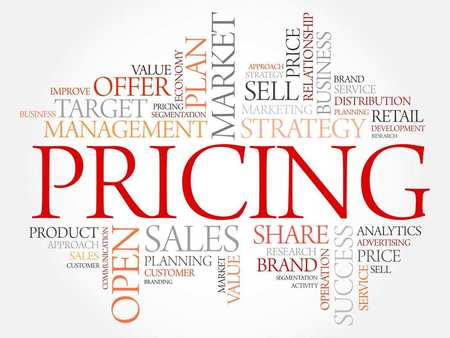
How do you determine how much to sell your service so that you can maximize your business’s profits?
Do you have a pricing strategy?
Do you have, and more importantly do you follow, a systematic approach for assigning a price to the professional services you are in the business of providing?
If the answer to any of these questions is “no” or sounds like a resounding “huh,” then this article may contain some valuable insights on how implementing value-based pricing model could be one of the more profitable decisions you could make for your business.
Selling your services for the right price is imperative if you plan to survive. Just “shooting in the dark” is nothing short of gambling that you have it right. Your selling price directly impacts your revenues, cash flows, profitability, and your ability to pay your bills. Without a profitable selling price you could eventually go out of business.
What Is Value-Based Pricing For Professional Services?
Value-based pricing, as noted in this definition, means determining the price of a service based on the benefits it provides for the consumer. You are essentially attaching a price to your service based on what the client thinks the service is worth. This approach contrasts the typical model that bases price on cost or hourly rate. When you are using value-based pricing you are trying to reach equilibrium where you are maximizing your revenue, yet charging the customers an amount they are also willing to pay.
What Are Some Of The Benefits To Value-Based Pricing?
Because of value-based pricing’s focus on customer research and understanding, the pricing model is a valuable method for understanding and serving your customers better, as noted by Cleverism.
In order to determine the price, you’ll need to survey customers and improve your understanding of the things they are looking for with the service. This enhanced understanding won’t just help you determine the price, it’ll also help you provide better service. This also translates into a huge benefit to the customer.
Using accountants as an example, value pricing involves setting a fixed price in advance for a service measured by the value it creates for the client.
For accountants who have always billed by the hour, as Firm of the Future notes, value pricing requires a paradigm shift. Instead of thinking first of the cost (in hours) of providing a service and basing the price from the cost, the accountant, instead, thinks first of the value to the client to create the price, then makes sure that the price is justified by the accountant’s cost.
In other words, focusing on the value added to the client and providing a fixed price infuses confidence into a more effective selling process as Firm of the Future observes:
Clients are more comfortable with price certainty,which isa feature of value-based pricing. If you are billing by the hour, you may have many clients who are accustomed to, and feel okay, with that arrangement. However, you may also have clients who cringe when they open your bills (though they don’t say anything) or potential clients who decide to do business elsewhere over the fear that the bill will be more than your estimate.
Drawbacks of Value Pricing
Value pricing can be more tedious at first, especially as you work to clearly grasp client needs, define the scope of the work, pin-point value-adding opportunities that your customers might not even know they need, and then zeroing in on a price derived from the client’s perception of the value received.
As noted by this writer’s comparison, value pricing is not simply a matter of artificially marking up a service or product. It requires an understanding of what customers want and need, and the ability to provide that for them. The disadvantage to value-based pricing is that it alienates the customer base motivated by affordability.
Conclusion
Value-based pricing takes a lot of hard work to implement and maintain. It does seem, however, that significant benefits can be reaped from value-based pricing in terms of increased profits and efficiencies for the service provider and its customers.
